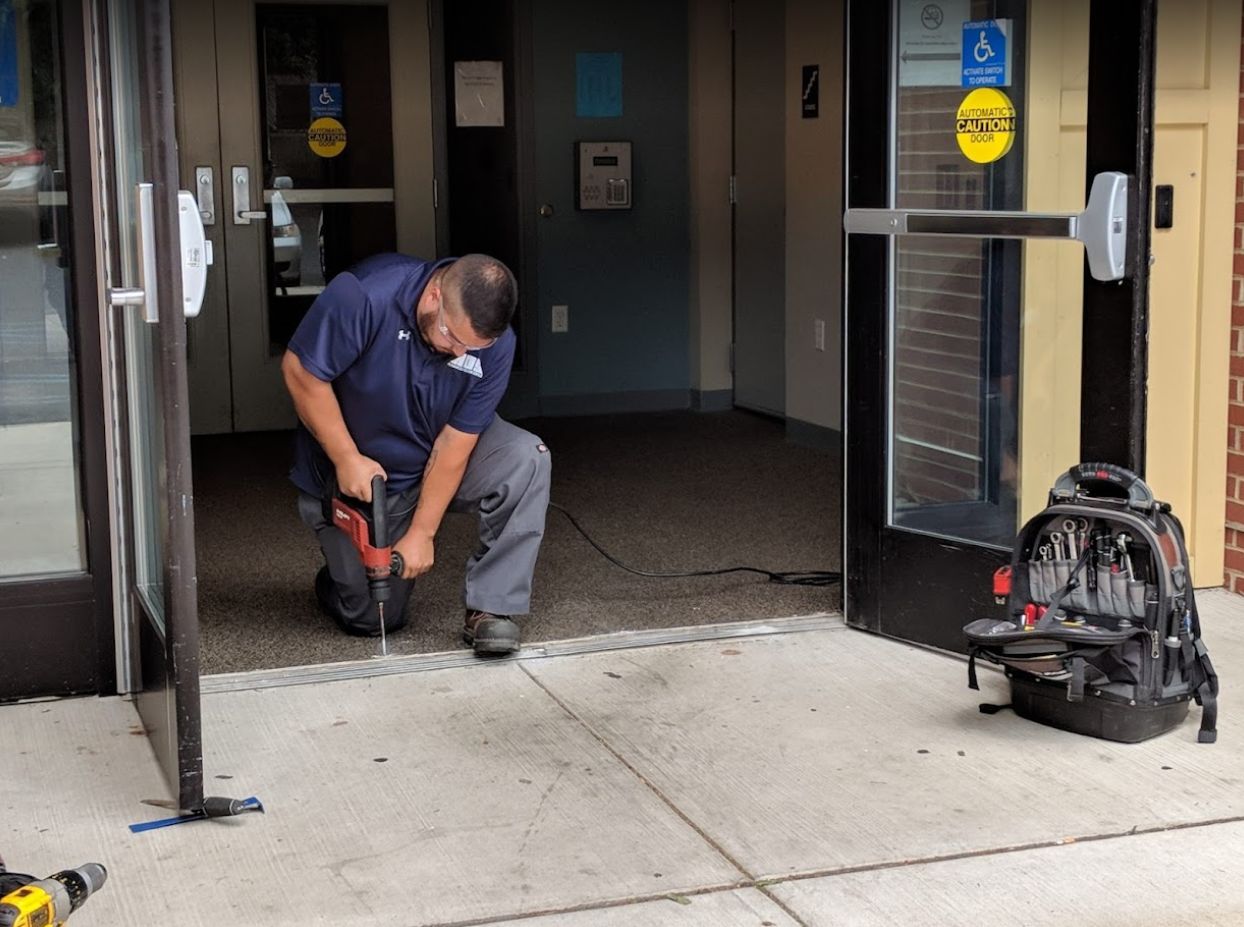INTRODUCTION
Determine the Area of the Room
Measure the longest walls in your room. Multiply the length and width, and divide by 9 to determine the square yardage. Add 10 percent to allow for errors, irregularities and pattern matching.
STEP 1
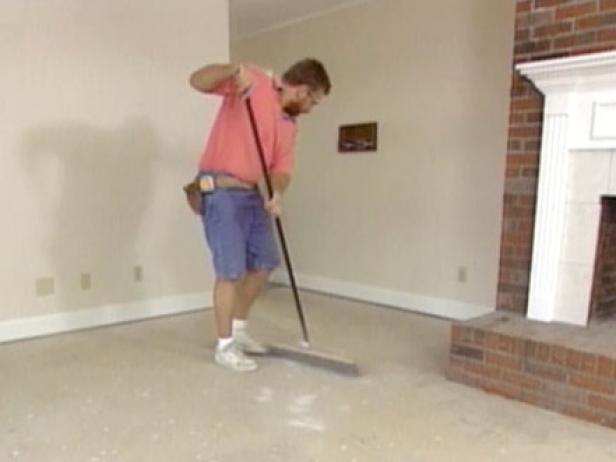
Clean the Subfloor
Make sure the surface to be carpeted is smooth and clean. Scrape up any paint or joint compound and sweep and vacuum the floor thoroughly.
STEP 2

Remove the Doors
If possible, remove the doors from the room so you won’t have to work around them. Having the doors out of the way will also make it easier for you to cut off the bottoms of the doorjambs if necessary.
STEP 3
Install the Tackless Strips
Cut the tackless strips to size with a strip cutter or heavy snips (Image 1). Nail the strips 1/2″ from the wall (Image 2). Don’t install tackless strips across thresholds or doorways; the tacks on the strips are sharp and could poke through the carpet and hurt your feet. Tackless strips come in a variety of widths, thicknesses and heights. Make sure you’re using the correct size. If you’re installing carpet over a concrete subfloor, use masonry tacks or epoxy adhesive to hold the tackless strips in place.
STEP 4
Install the Carpet Pad
Lay out the carpet pad perpendicular to the direction you plan to install the carpet (Image 1), and staple it near the tackless strips with a staple hammer (Image 2).
STEP 5
Staple Any Pad Seams
Staple the seam of the pad, alternating staples so that they aren’t beside one another. Stretch the padding so that the pieces are butted tightly together.
STEP 6
Trim the Pad
Feel through the padding to locate the tackless strip, and use a utility knife to cut away the padding along the interior edge of the strip (Image 1) so that all the tacks are exposed (Image 2).
STEP 7

Cary Wiedman
Notch Corners for Trimming
Measure the room at its longest point, and add 3″ to the measurement. Take the carpet outside if possible, and notch the back on both sides at the appropriate length. The carpet will be easier to handle outside. You might want someone to help you.
STEP 8
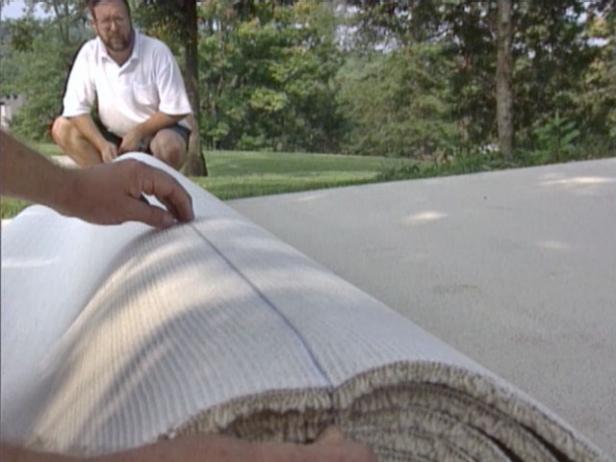
Cary Wiedman
Trim the Carpet to Size
Roll the carpet with the back facing outward until the notched areas show. Then run a chalk line from notch to notch. Cut the back of the carpet along the chalk line, roll up the carpet, and take it back inside.
STEP 9
Trim the Excess Carpet
Roll out the carpet into the room. Keep it as straight as possible. Cut away excess carpet, but leave about 3″ extra next to the walls (Image 1). Lay out any additional carpet needed to fill the room (Image 2).
STEP 10
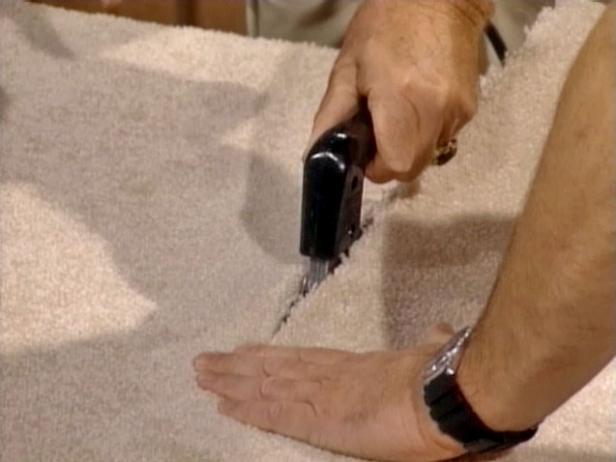
Glue the Seams Together
Where the carpet edges join, you’ll need to create a seam. The seamed edges of both carpet segments must be straight. Check the edges: don’t assume that a factory edge is straight. Place a piece of seaming tape under the seam, adhesive side up. Heat the seaming iron to the temperature recommended by the tape manufacturer, and rest it directly on the tape for 15 to 30 seconds. Then slowly slide the iron along the tape, and press the seam into the melted glue behind the iron. After the pieces are joined, place heavy objects on the seam to hold it in place as the glue dries. Seams should run parallel to the room’s main light source. And make sure the pile of both pieces leans in the same direction.
STEP 11
Trim Around the Obstacles
Dry-fit the carpet, butting one end against a wall. Use a carpet knife to trim the carpet to fit around obstacles.
STEP 12

Attach the First Edge of the Carpet
Attach the carpet to the tackless strips at one end of the room, using the knee kicker. Place the face of the knee kicker against the carpet about 3″ away from the wall, and forcefully strike the padded end to stretch the carpet over the tackless strips.
STEP 13
Trim the Excess from the Edges
Trim excess carpet (Image 1) with a wall trimmer, which rests against the wall and provides a straight cut at the correct spot. Use a stair tool to press the cut edges underneath the baseboard trim (Image 2).
STEP 14

Stretch the Carpet
Use the power stretcher to attach to the strips on the other side of the room. For corners and alcoves where the power stretcher can’t reach, use the knee kicker and stair tool.
STEP 15
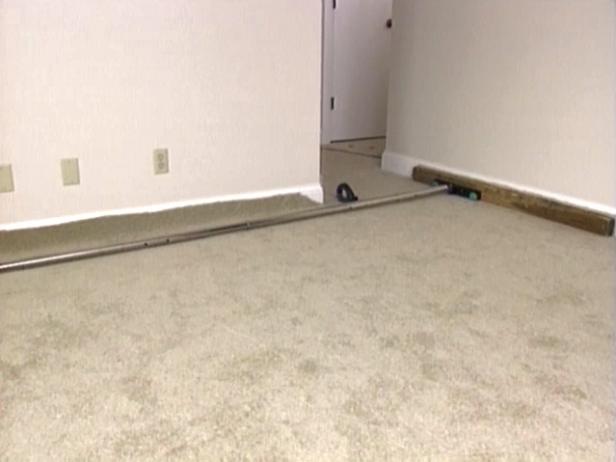
Use the Binder Bar
Nail a binder bar to any areas where the carpet ends without abutting a wall such as a threshold. Stretch the carpet with the knee kicker to link to the hooks in the binder bar then use a wooden block or scrap piece of lumber to close the binder bar onto the edge of the carpet.
STEP 16
Finish Trimming the Carpet
When all the carpet is in place, cut out the vent openings. Attach shoe molding around the room if desired.
Contact us for more information.










